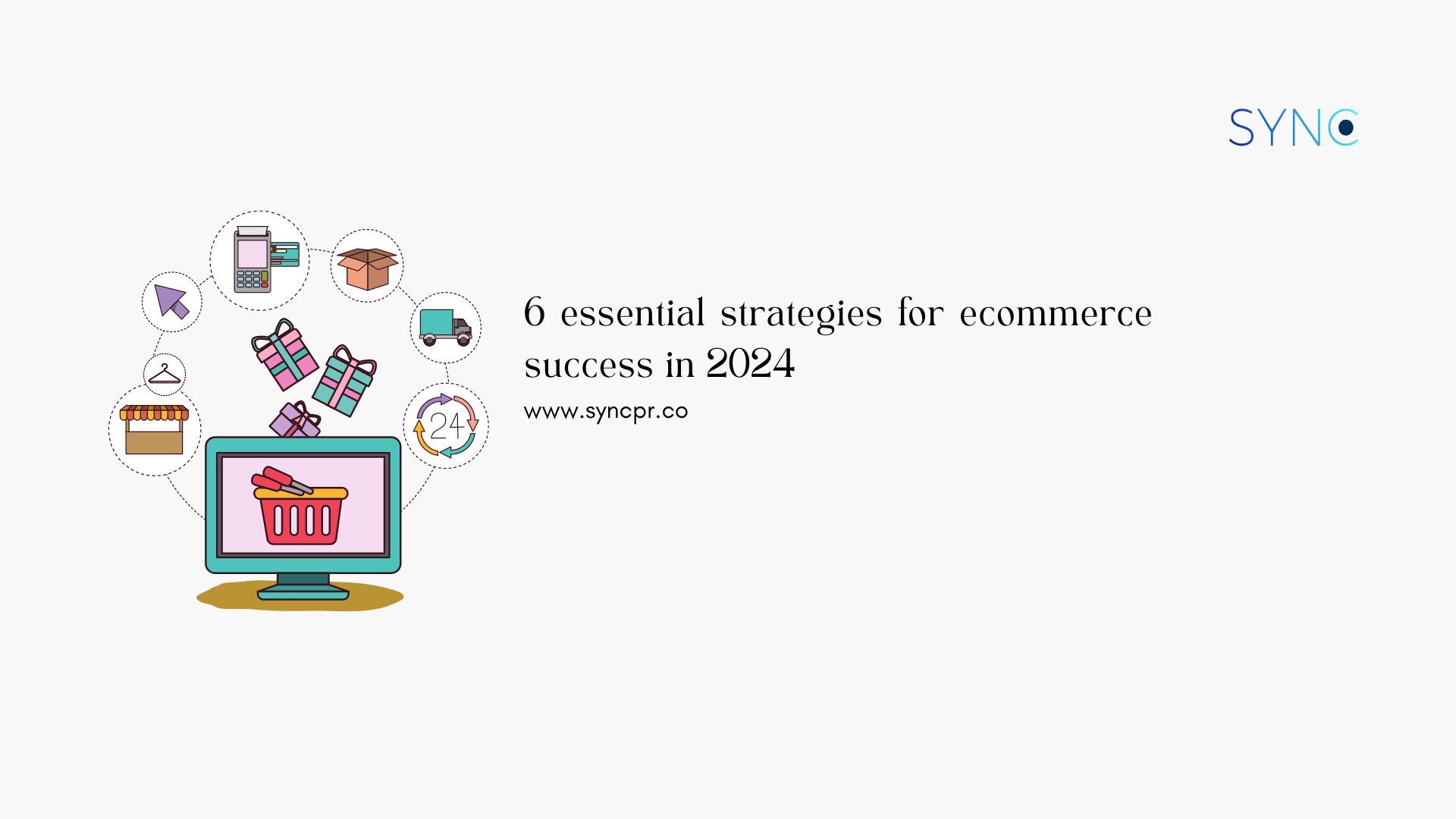Are you ready to take your ecommerce business to the next level in 2024? With the ecommerce landscape evolving rapidly, staying ahead of the curve is more crucial than ever. As technologies advance and consumer preferences shift, understanding and adopting the latest trends can make a significant difference in your success. In this blog, we’ll explore five essential strategies that can help your online store thrive in a competitive market.
1. Leveraging AI and Machine Learning
Artificial Intelligence (AI) and machine learning are not just buzzwords—they’re revolutionizing how ecommerce businesses operate. By harnessing these technologies, you can offer highly personalized shopping experiences that resonate with your customers. Imagine a scenario where your online store predicts what products a shopper is likely to buy next based on their browsing history and past purchases. This isn’t just convenient for the customer; it also increases your chances of making a sale.
Many successful ecommerce sites use AI to power recommendations, optimize search results, and automate customer service with chatbots. These AI-driven chatbots can handle a range of queries, from tracking an order to answering product-related questions, freeing up human resources for more complex issues.
If you’re thinking that AI sounds like a costly investment, you’ll be pleased to know that there are now more accessible options designed for small to medium-sized enterprises. Many platforms offer AI tools as part of their standard services, or you can explore open-source options that can be customized to suit your needs. Implementing AI might seem daunting, but the return on investment in terms of customer satisfaction and operational efficiency can be substantial.
READ MORE: Is AI the future for PR and why it matters
2. Optimizing for mobile-first shopping

In today’s fast-paced world, mobile devices are the go-to choice for online shoppers. In fact, a growing number of consumers prefer to browse and buy from their smartphones. This shift makes it essential for your ecommerce site to be optimized for mobile use. A mobile-first approach ensures that your website looks good and functions smoothly on smaller screens. It also means simplifying the shopping process to make it as quick and hassle-free as possible.
Key to mobile optimization is a responsive website design that adjusts seamlessly to different screen sizes and orientations. Also, consider the user journey on mobile devices—minimize the number of steps to purchase, ensure text is readable without zooming, and buttons are easy to navigate with touch. Remember, a mobile-friendly site isn’t just about aesthetics; it’s about speed. Mobile users are often on the go, so page loading times should be as fast as possible. Tools like Google’s PageSpeed Insights can help you gauge your site’s performance and pinpoint areas for improvement.
3. Enhancing User Experience with AR and VR
Augmented Reality (AR) and Virtual Reality (VR) are taking the ecommerce experience to an entirely new level. These technologies allow customers to visualize products in a way that photos and videos can’t match. For example, AR can enable shoppers to see how a piece of furniture would look in their living room or how a pair of sunglasses might look on their faces directly from their smartphone or computer. This not only adds an element of fun and engagement but can also significantly reduce the likelihood of returns by helping customers make more informed purchasing decisions.
Setting up AR and VR might sound futuristic, but it’s increasingly becoming accessible. Many ecommerce platforms offer plugins and tools that integrate AR features without the need for heavy coding. Meanwhile, VR setups, which used to be costly, are becoming more affordable with advances in technology and wider adoption.
By incorporating AR and VR into your ecommerce site, you not only enhance the shopping experience but also set your brand apart as a forward-thinking leader in retail innovation. This can be especially effective in markets where competition is fierce, and a unique shopping experience can sway customers in your favour.
4. Utilizing Sustainable Practices

Sustainability isn’t just a trend—it’s a crucial factor that more consumers are considering before making a purchase. In 2024, eco-conscious shopping practices are expected to continue rising, making sustainability a significant aspect of your business strategy. From using biodegradable packaging to partnering with green logistics providers, there are numerous ways your ecommerce business can contribute to environmental conservation.
Start by examining your product sources and supply chain processes. Opt for suppliers who practice ethical manufacturing and source materials sustainably. For packaging, seek alternatives to plastic, such as recycled paper or biodegradable materials, which not only reduce environmental impact but also resonate well with environmentally conscious consumers. Additionally, consider implementing a carbon offset program at checkout, giving customers the option to make their order carbon neutral.
Communicating your sustainability efforts transparently can also strengthen your brand’s reputation and build trust with your customers. Include detailed information about your practices on your website and through your marketing channels. This transparency shows that your commitment to the environment is genuine, potentially increasing customer loyalty and attracting a broader audience who values sustainability.
5. Don’t Snooze on Email Marketing
Despite the rise of social media and other digital marketing channels, email remains a highly effective tool for connecting directly with customers. Ecommerce businesses should be using email marketing, even in 2024, as it continues to deliver a strong return on investment. According to a recent study, email marketing yields an average return of $42 for every $1 spent, highlighting its efficiency and impact. To execute email marketing successfully, focus on personalization and segmentation. Tailor your messages to meet the specific interests and purchasing behaviours of different customer segments. This approach ensures that your emails are relevant and engaging, increasing the likelihood of opens and clicks. Additionally, consider automating your email campaigns to maintain consistent communication and nurture customer relationships without overwhelming your team. By leveraging these strategies, you can maximize the effectiveness of your email marketing efforts and keep your audience engaged and ready to convert.
6. Strengthening Social Media and Influencer Collaborations
Social media continues to be a powerhouse for driving ecommerce sales. In 2024, leveraging platforms like Instagram, TikTok, and Facebook for marketing your products is more vital than ever. However, the key to succeeding on these platforms isn’t just regular posting but creating engaging, high-quality content that resonates with your target audience. Collaborating with influencers can amplify your reach and credibility, as these individuals have the power to sway public opinion and consumer behaviour.
When choosing influencers, it’s important to partner with those who align with your brand values and have a genuine connection with their followers. This authenticity makes their endorsements more impactful. For a more effective strategy, consider long-term partnerships instead of one-off posts. Such relationships allow influencers to become true ambassadors for your brand, providing consistent and genuine support across their platforms.
Moreover, utilize social media tools like shoppable posts, live streaming, and interactive stories to make the shopping experience convenient and enjoyable. These features can directly link users to product pages, making it easier for them to make immediate purchases. By smartly integrating these tools with your influencer collaborations, you can create a seamless path from product discovery to purchase, enhancing both customer engagement and sales.
Conclusion
As we’ve explored the five essential strategies for ecommerce success in 2024, it’s clear that staying adaptable and forward-thinking is crucial. From integrating advanced technologies like AI and AR/VR to embracing sustainability and optimizing for mobile-first experiences, these strategies are designed to enhance your customer’s shopping experience and set your brand apart in the competitive digital marketplace.
Adopting these practices may require some initial investment and effort, but the payoff can be significant. By enhancing user engagement, building trust, and streamlining the shopping process, you position your ecommerce business for growth and sustained success. Remember, the goal is to not just attract new customers but also to create an environment where existing customers want to return.


Great insights in this article, Diya! The emphasis on AI and machine learning is spot on—these tools are game-changers for creating personalized shopping experiences that drive conversions. I also appreciate the focus on sustainability. As consumers become more eco-conscious, adopting green practices isn’t just good for the planet, but it’s also a smart business move. Looking forward to seeing how these strategies shape the ecommerce landscape in 2024!
Natasha J.
https://vroomexpress.com.sg/